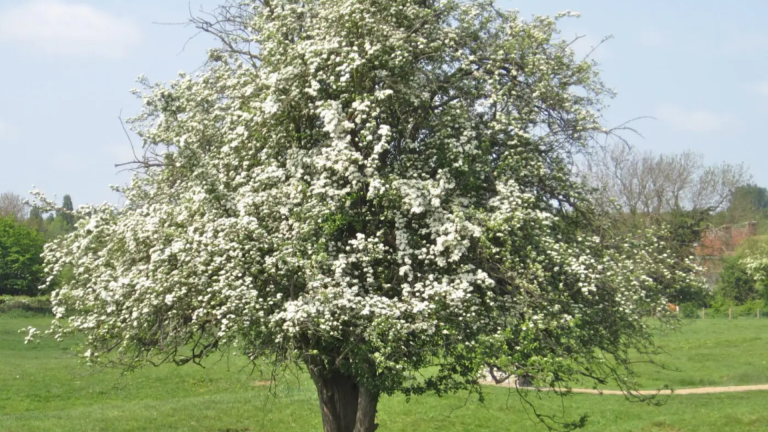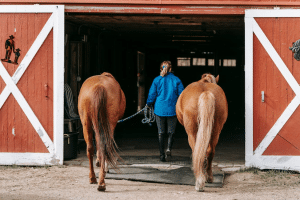It’s easy to pass by a hawthorn tree without knowing what it is. But once you learn the signs, you’ll start noticing it in parks, hedges, and woodlands.
The hawthorn tree, known by its scientific name Crataegus monogyna, is common and easy to recognize once you know what to look for.
This tree stands out with its white spring flowers, bright red fruit in the fall, and sharp thorns on its branches. Its leaves are small and deeply lobed, giving them a hand-like shape.
Hawthorn trees are found across much of Europe and in parts of North America. They thrive in hedgerows, field edges, and rocky soil.
In this blog, I’ll show you how to recognize a hawthorn by its leaves, bark, flowers, and fruit. I’ll also explain where it grows, how it changes with the seasons, and how to tell it apart from similar trees. This guide will help you feel more confident when spotting hawthorns outdoors.
Key Identification Features of a Hawthorn Tree
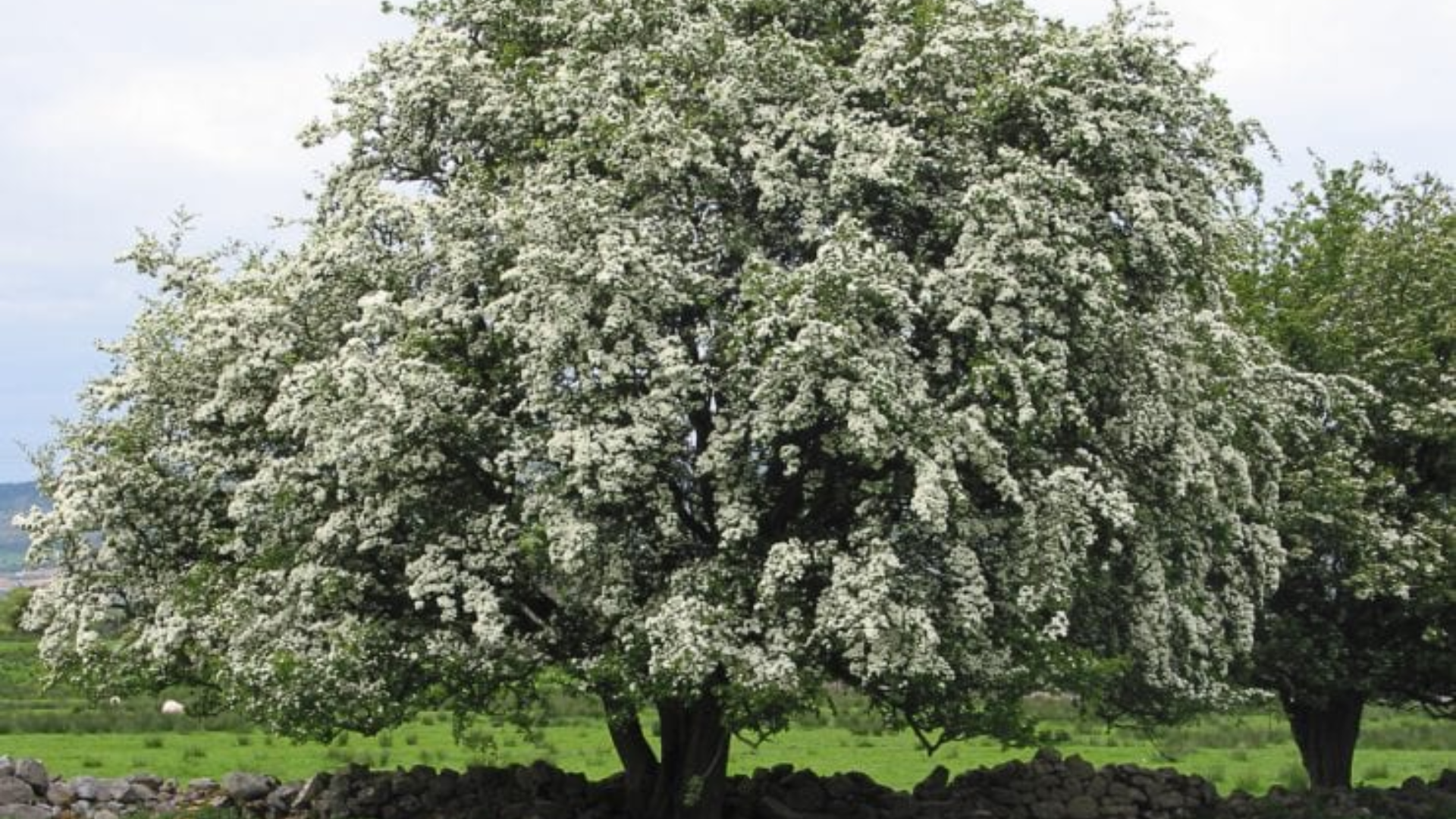
Hawthorn trees are small, flowering trees that grow in many natural spaces, especially in hedgerows and field edges.
They are common across Europe and parts of North America. These trees are easily identifiable if you know the key signs to look for. Each part of the tree—from its leaves to its thorns—gives helpful clues.
- Leaves: Small and lobed, with sharp-looking edges. They often look like tiny hands or mittens.
- Flowers: White, with five petals, and usually appear in bunches. They bloom around May and sometimes have a faint scent.
- Fruits (Haws): Small red fruits that look like berries. They appear after flowering and often stay on the tree through winter.
- Bark: Thin, gray to brown, and rough. Older trees may show flaky or cracked bark.
- Thorns: Thin, sharp spines grow along the branches. They can be up to 1 inch long and are easy to feel.
When you spot several of these features together, you’re likely looking at a hawthorn tree. The mix of white spring flowers, thorny twigs, and bright red berries makes it stand out year-round.
Seasonal Changes That Help With Identification
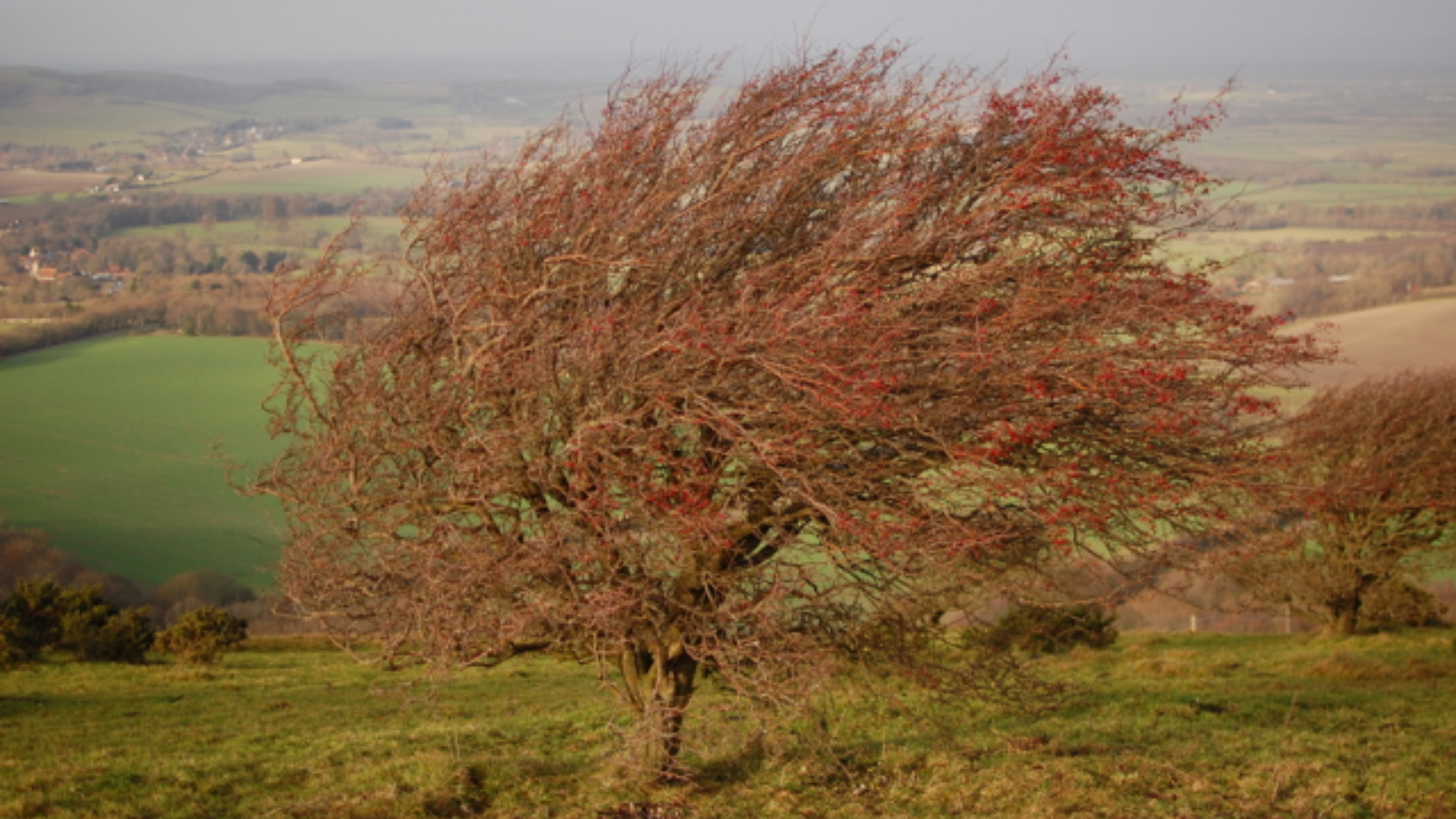
Hawthorn trees look different in each season, and those changes can help you know what tree you’re looking at. Paying attention to these signs can confirm if it’s really a hawthorn.
In spring, the tree blooms with small white flowers. These appear in bunches and usually have five petals. This is one of the best times to spot hawthorn.
In summer, the leaves are fully grown. They are small, lobed, and have toothed edges. The branches may still show sharp thorns.
In fall, the tree produces red fruits called haws. These fruits are small and round, and often remain on the tree even after the leaves have fallen.
In winter, the leaves are gone, but you can still see the bark and thorns. The bark is gray or brown and rough in texture. The sharp thorns remain on the bare branches.
Watching the tree through the year gives a clearer picture and helps you feel sure it’s a hawthorn.
Habitat and Natural Range of Hawthorn Trees
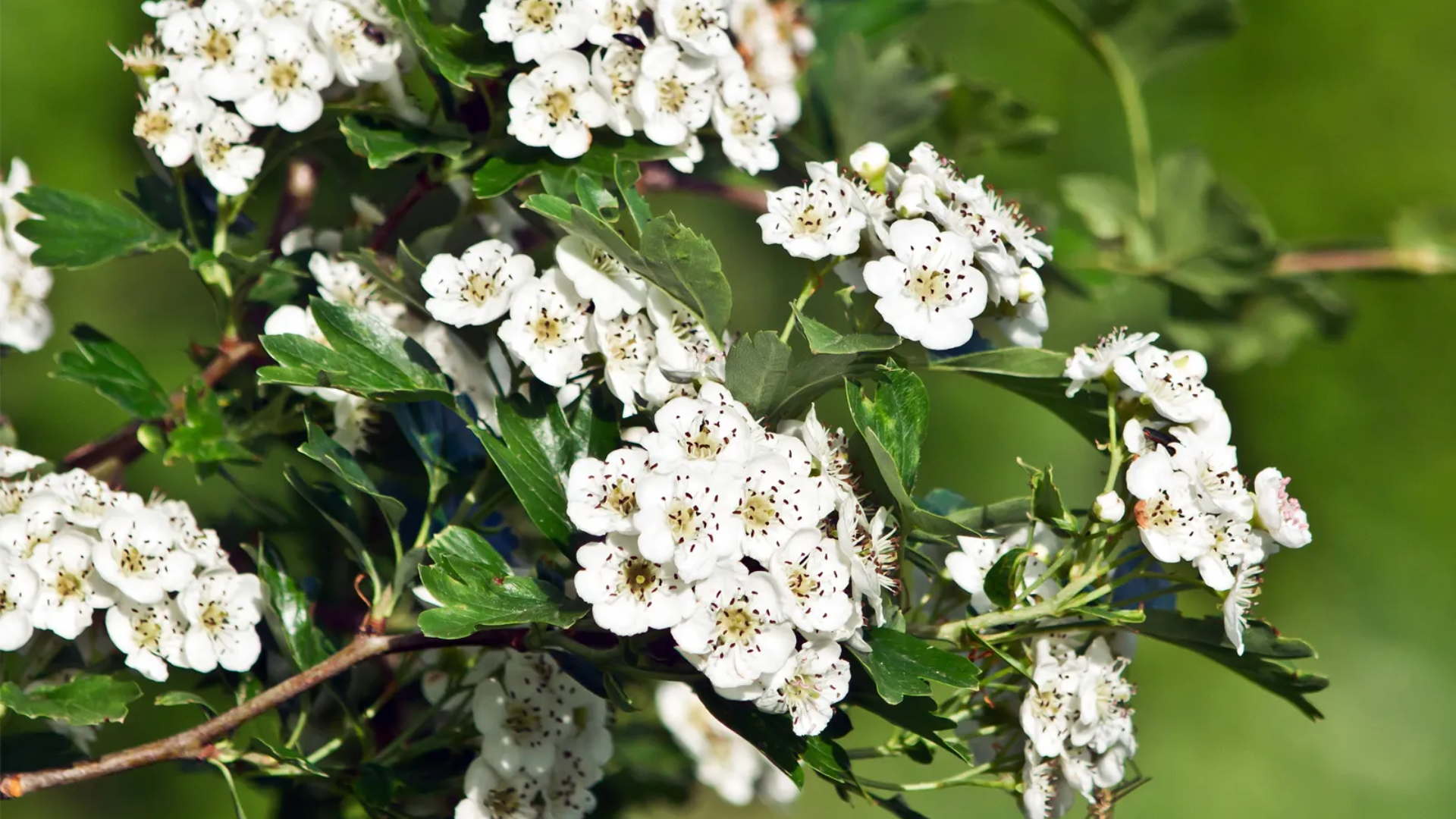
Hawthorn trees are native to parts of Europe and western Asia. Over time, they have spread to other regions, including North America, where they now grow in many wild and planted spaces.
They are often found in hedgerows, along field edges, and in rocky or open spaces. These trees grow well in both rural and semi-urban settings.
Hawthorn does best in full sun or light shade. It grows in a variety of soils, but prefers well-draining ground. It can even grow in thin or rocky soil, provided there is sufficient light.
The tree’s strong roots and hardy nature make it a common sight in places with poor soil or dry weather. It requires minimal care to grow and thrive.
Its ability to grow in various places and support local wildlife makes hawthorn a vital tree in many regions.
Common Varieties of Hawthorn
Hawthorn trees come in different types, but two are most often seen in the wild or planted in gardens. While they look similar at first glance, small details in their leaves and fruits help tell them apart. Knowing which one you’re looking at can be useful, especially if you’re planting or studying trees.
- Common Hawthorn (Crataegus monogyna): This is the most common variety. It usually grows with a single seed in each fruit. Its leaves are more deeply cut or lobed, and the tree tends to be tall with a spreading shape.
- Midland Hawthorn (Crataegus laevigata): This type often has two seeds inside its fruit. The leaves are shorter, wider, and not as deeply lobed. It may grow in more compact shapes and is often found in older hedges.
The number of seeds and the shape of the leaves are the primary distinguishing features of these trees. Both types support wildlife and look beautiful in spring and fall.
How To Avoid Confusing Hawthorn With Similar Trees?
Some trees share similar features with hawthorn, especially in spring when many trees bloom and grow fruit. From a distance, these trees might look the same.
But if you focus on their bark, leaves, thorns, and fruit, you’ll notice important differences. These clues can help you correctly identify hawthorn, even in a crowded hedgerow or wild space.
| Tree Name | Flowers and Bloom Time | Bark and Branches | Leaves and Fruit |
|---|---|---|---|
| Hawthorn | White flowers in May | Gray-brown bark, sharp thorns | Lobed leaves, red fruit that lasts into winter |
| Blackthorn | White flowers appear before the leaves in early spring | Dark bark, stiff thorns | Small, smooth leaves, blue fruit called sloes |
| Crab Apple | Pink or white flowers in spring | Rough bark, no thorns | Rounded leaves, small apple-like fruit |
| Wild Cherry | White spring flowers | Smooth bark with horizontal marks | Long, oval leaves, shiny red cherries |
Looking at bloom timing, bark color, leaf shape, and the presence or absence of thorns gives you a better chance of telling these trees apart. Even if the flowers seem similar, other parts of the tree can confirm what you’re looking at.
What Is the Difference Between a Hawthorn Tree and a Bush?
Hawthorn is a flexible plant that can grow as a small tree or as a bushy shrub. The way it grows depends on its location, the amount of space it has, and whether it’s pruned.
In gardens or open spaces, it often grows tall with one main trunk. In hedgerows or tight areas, it spreads out with many stems.
| Feature | Hawthorn Tree | Hawthorn Bush |
|---|---|---|
| Main Structure | One single trunk | Several stems from the base |
| Height | Taller, often over 15 feet | Lower, usually under 10 feet |
| Shape | Upright, rounded crown | Wide and dense, fills more ground space |
| Common Use | Planted as a feature or shade tree | Often used in hedgerows or barriers |
| Pruning Effect | Minimal shaping keeps it tree-like | Regular cutting helps it stay bushy |
You can spot the difference by looking at the base. A tree will have a clear trunk, while a bush will have multiple stems close to the ground. Both forms still share the same leaves, flowers, and fruit.
Is the Hawthorn Tree Safe To Touch or Grow at Home?

Hawthorn trees can be grown at home, but they do have sharp thorns. These thorns can cause cuts if touched, so it’s best to be careful around the branches.
If you have young children or pets, avoid planting hawthorn too close to play areas or paths. The thorns may poke skin or paws if someone gets too close.
Good places to plant hawthorn include along fences, property edges, or open spaces away from high-traffic spots. This gives the tree room to grow and keeps people safe.
The tree supports birds and insects, making it beneficial in any yard that supports wildlife. Just make sure to keep the area around it clean and clear so no one accidentally bumps into the thorns.
With smart placement, hawthorn can still be a safe and useful tree to grow at home.
Wildlife and Ecological Importance
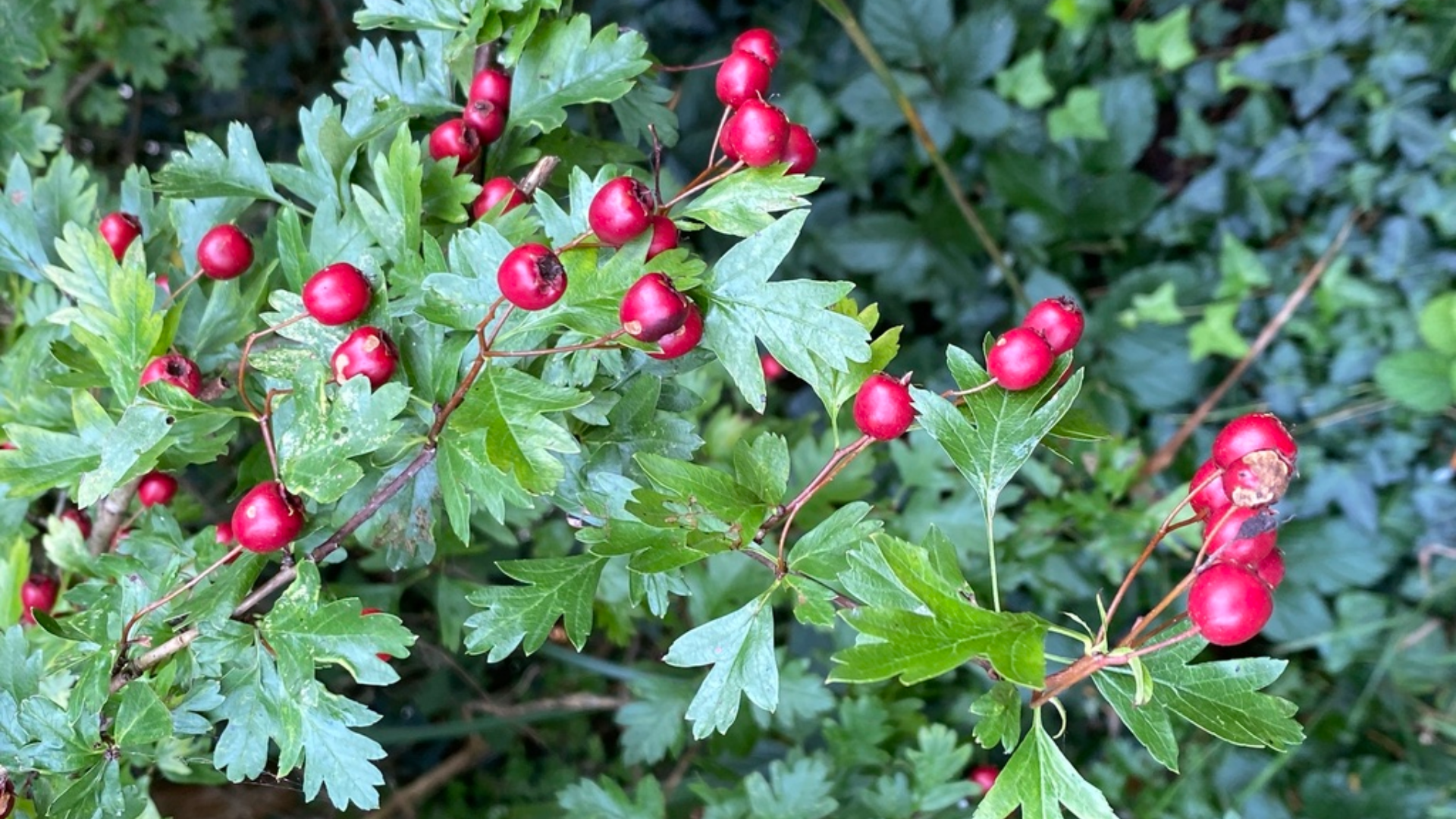
Hawthorn trees provide habitat for many kinds of wildlife. They provide food, shelter, and places to hide for animals and insects throughout the year.
Birds eat the red berries, especially in late fall and winter when other food is hard to find. Birds also build nests inside the thick branches.
Bees and insects visit the tree when it blooms in spring. The flowers provide them with nectar, which aids in pollination. Some insects also feed on the leaves.
Because it supports a wide range of species, hawthorn is a vital component of the local environment. It often grows in hedgerows, which serve as highways for animals to move safely across the land.
Even in a garden, one hawthorn tree can support a wide mix of life. This makes it a good choice for people who want to help nature close to home.
Final Tips for Identifying Hawthorn in the Field
Learning to spot a hawthorn tree becomes easier with practice. The key is to use a mix of traits instead of relying on just one. While flowers and fruit are helpful, they may not be there year-round, so it’s smart to look at bark, leaves, and thorns too.
- Use a full set of signs: Combine what you see in the leaves, flowers, fruit, thorns, and bark.
- Check it more than once: Visit the same tree in different seasons to observe its changes. Flowers in spring and fruit in fall are the best times for spotting clues.
- Bring a guide or use an app: These tools help confirm what you see and are also helpful for learning about other local trees.
With just a little effort, you’ll soon be able to point out hawthorn trees during walks, hikes, or even in your own neighborhood. It’s a skill that connects you more with nature and makes every outing more interesting.
Conclusion
The hawthorn tree is easily identifiable once you know what to look for. Its sharp thorns, hand-shaped leaves, white spring flowers, and red fruit in autumn all help it stand out from other trees. These features make it easier to recognize in different seasons.
In this post, we looked at what a hawthorn tree is and why it matters. You learned about its key traits, where it grows, and how it supports birds, bees, and other wildlife. We also shared tips to help you distinguish it from other trees, such as blackthorn or crab apple.
This tree is beneficial to both nature and humans. It helps feed animals, supports pollinators, and brings life to hedgerows and gardens. Knowing how to spot it can make your walks more interesting and your planting choices more thoughtful.
Next time you pass a small tree with thorns and clusters of red berries, take a closer look—it might be a hawthorn. And now, you’ll know for sure.


